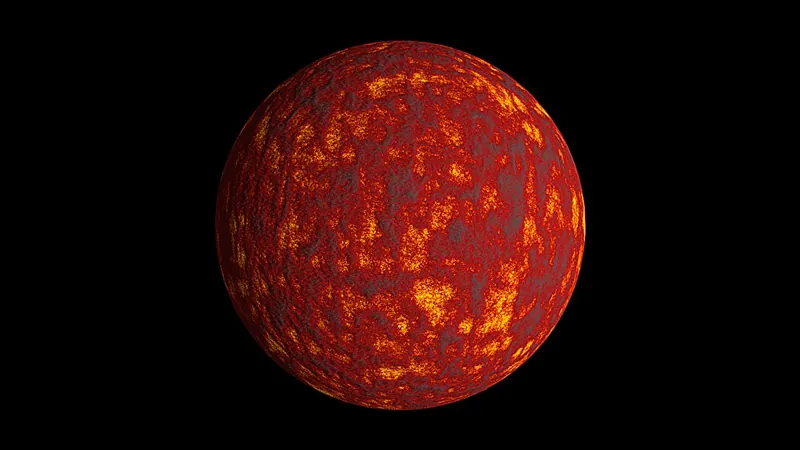
Unlocking the Secrets of Magma Oceans: How Earth and Mars Were Shaped in Their Infancy!
2024-10-10
Author: Benjamin
Unlocking the Secrets of Magma Oceans: How Earth and Mars Were Shaped in Their Infancy!
Before Earth was the stunning blue planet we know today, it was enveloped in a primordial ocean - not of water, but of molten rock, reaching depths that could exceed thousands of kilometers! This vast magma ocean was a critical phase in the planet's early history, setting the stage for the geological and atmospheric conditions we experience now.
As this immense sea of magma cooled, a fascinating process began: different minerals crystallized at various rates, dramatically altering the chemical composition of the molten rock. Even more intriguing, as the magma released gases into the atmosphere, it transformed the very air that surrounded the planet. Can you imagine a time when the atmosphere was filled with volatile elements, devoid of the life-sustaining oxygen we breathe today?
Interestingly, Mars experienced a similar magma ocean phase during its early formation, along with many other rocky planets in our solar system. However, since these events happened eons ago and in the far reaches of space, piecing together this geological puzzle has proven to be a monumental challenge for scientists.
Now, a groundbreaking study by a team led by Schaefer has shed new light on these ancient processes through innovative models that simulate how the magma oceans of Earth and Mars evolved as they crystallized. Published in the Journal of Geophysical Research: Planets, their research utilized atmospheric clues and insights into iron chemistry to unravel this mystery.
The study introduced new calculations that detail how ferrous (reduced) and ferric (oxidized) iron interact during the crystallization of magma in the mantle. By adjusting variables like the initial depths and chemical compositions of the magma ocean, the researchers determined which scenarios could recreate the atmospheres believed to have surrounded early Earth and Mars.
Surprisingly, they discovered that models starting with a shallow magma ocean provided the best fit for Earth's early atmosphere. This scenario suggests a mantle that was only partially melted or a fully melted mantle that began to solidify from the middle, leaving both the innermost and outermost layers still in liquid form for an extended period.
Conversely, the Martian models presented a challenge: none aligned well with existing research unless the initial magma had significantly lower levels of ferric iron than previously assumed.
These findings not only enhance our understanding of how rocky planets like Earth and Mars formed but also emphasize the urgent need for experimental research into iron's behavior in molten rock. As scientists continue to decode the secrets of our celestial neighbors, the mysteries of the universe beckon us to explore even deeper!
Stay tuned as we explore more about our cosmos, and don't miss the next wave of revelations that could change everything we know about planetary formation!









 Brasil (PT)
Brasil (PT)
 Canada (EN)
Canada (EN)
 Chile (ES)
Chile (ES)
 España (ES)
España (ES)
 France (FR)
France (FR)
 Hong Kong (EN)
Hong Kong (EN)
 Italia (IT)
Italia (IT)
 日本 (JA)
日本 (JA)
 Magyarország (HU)
Magyarország (HU)
 Norge (NO)
Norge (NO)
 Polska (PL)
Polska (PL)
 Schweiz (DE)
Schweiz (DE)
 Singapore (EN)
Singapore (EN)
 Sverige (SV)
Sverige (SV)
 Suomi (FI)
Suomi (FI)
 Türkiye (TR)
Türkiye (TR)